January closed with a 2.7% gain in the S&P 500, which was well above the historical average (1.06%) and the average over the last 10 years (1.14%).
There is an old adage that goes “As goes January, so goes the rest of the year.” Although the evidence doesn’t quite back that up.
However, I looked back at the times when January finishes especially strong. In this case, a January gain of 2.5% or more. Since 1958 (the first full year of the S&P 500), there has been 29 such occurrences. So about 42% of the time.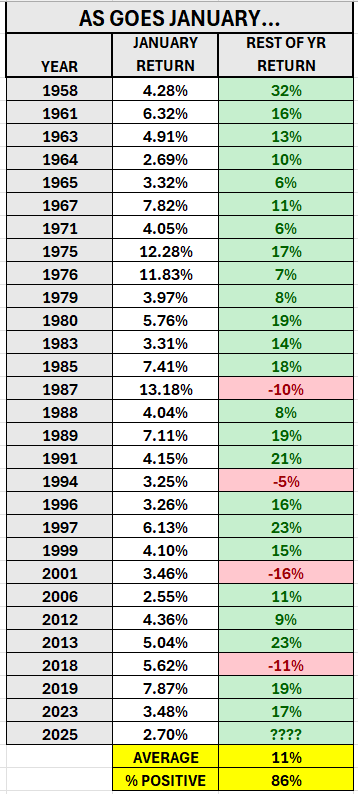
What we see is that when January has been strong, the market has ended up closing the year above the January closing level 86% of the time (25 out of 29), with an average gain of 11%. Bear in mind, that this only takes into account the start and end points. There can be significant volatility in between.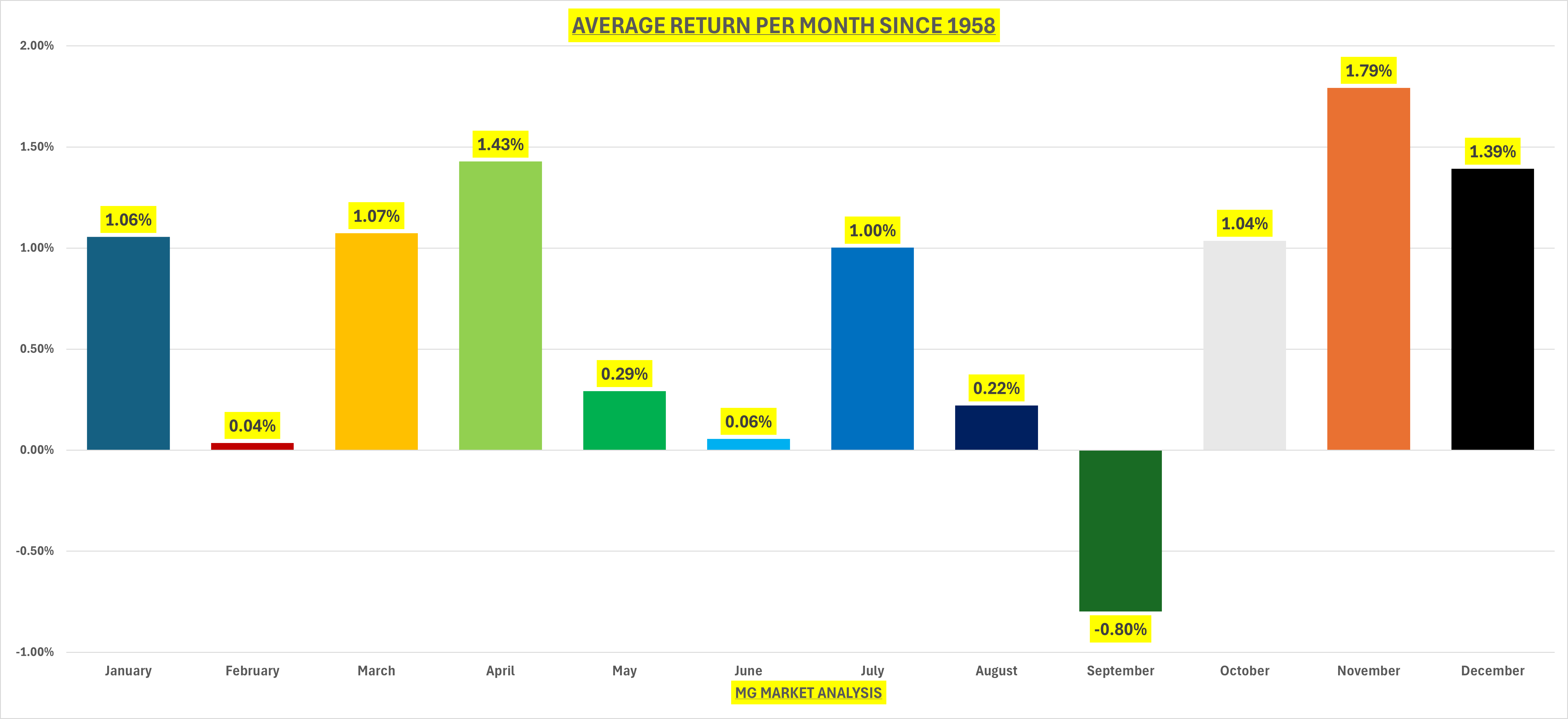
Now we head into what has historically been the 2nd weakest month of the year. With an average return of 0.04%, with only September being worse.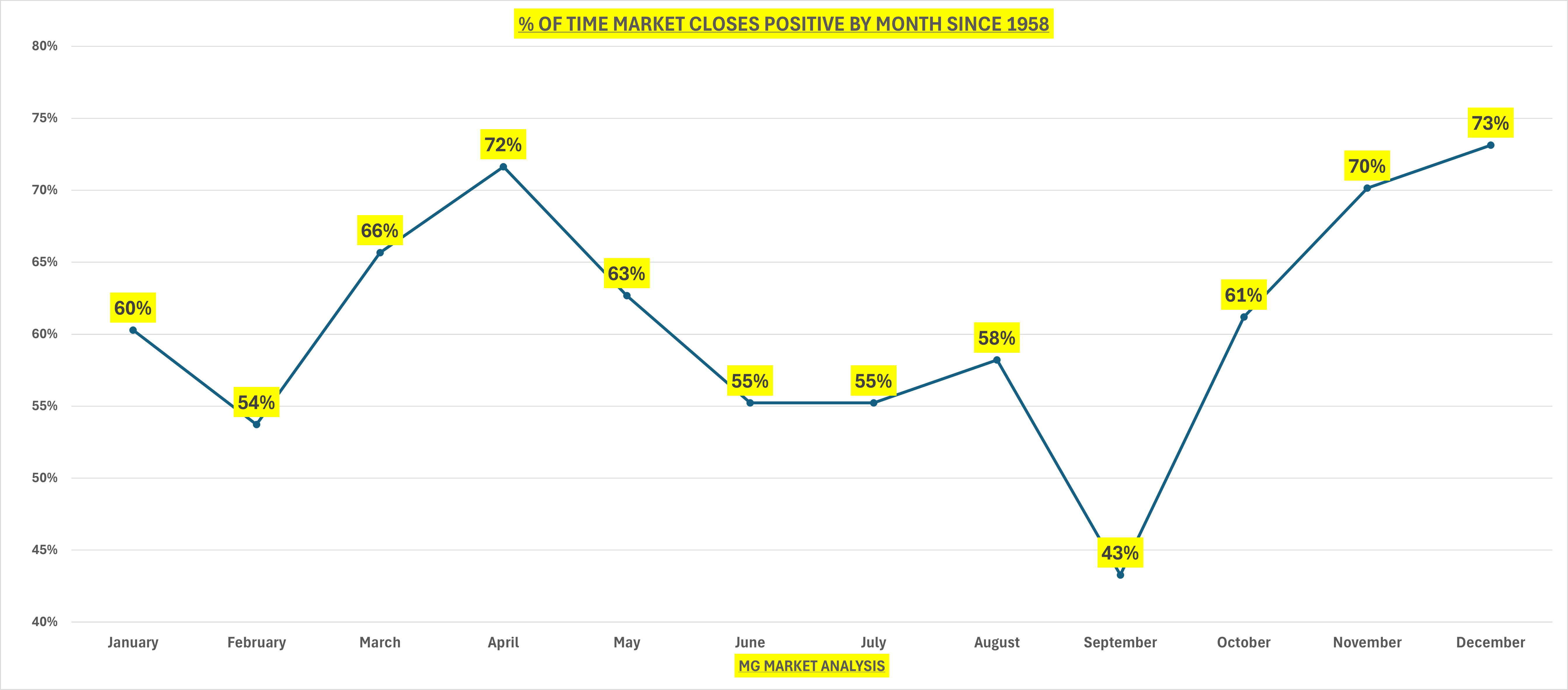
February has only closed with a gain 54% of the time (a coinflip basically), with September being the only month with worse odds.
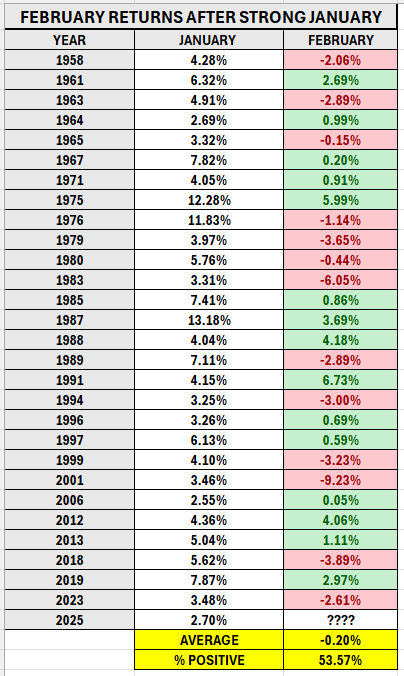
I checked to see if February returns were any different after a strong January. Turns out its actually a little worse than the historical average.
Average returns for February after a strong January, are actually -0.20% and finishing positive only 53.5% of the time.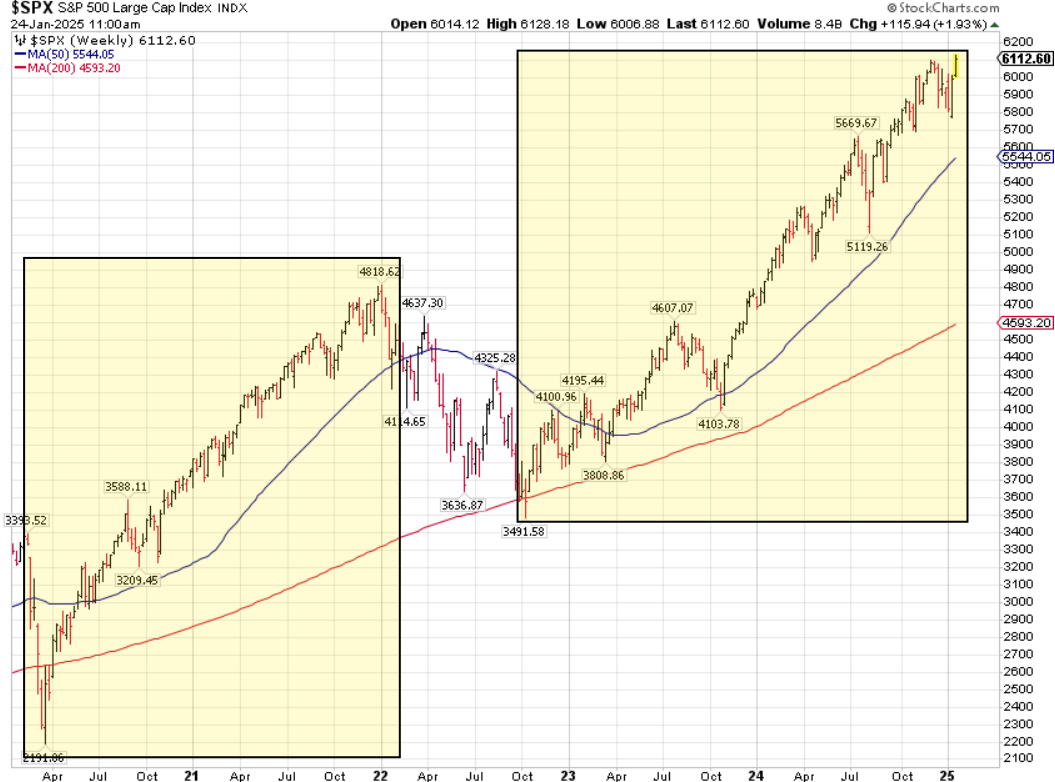
Let’s add in the fact that the S&P 500 hit a major measured move target in January at 6115. Essentially matching the size of the 2020-2022 bull market in terms of points. This has the potential to act as resistance at least in the short term and signal the market may be overbought.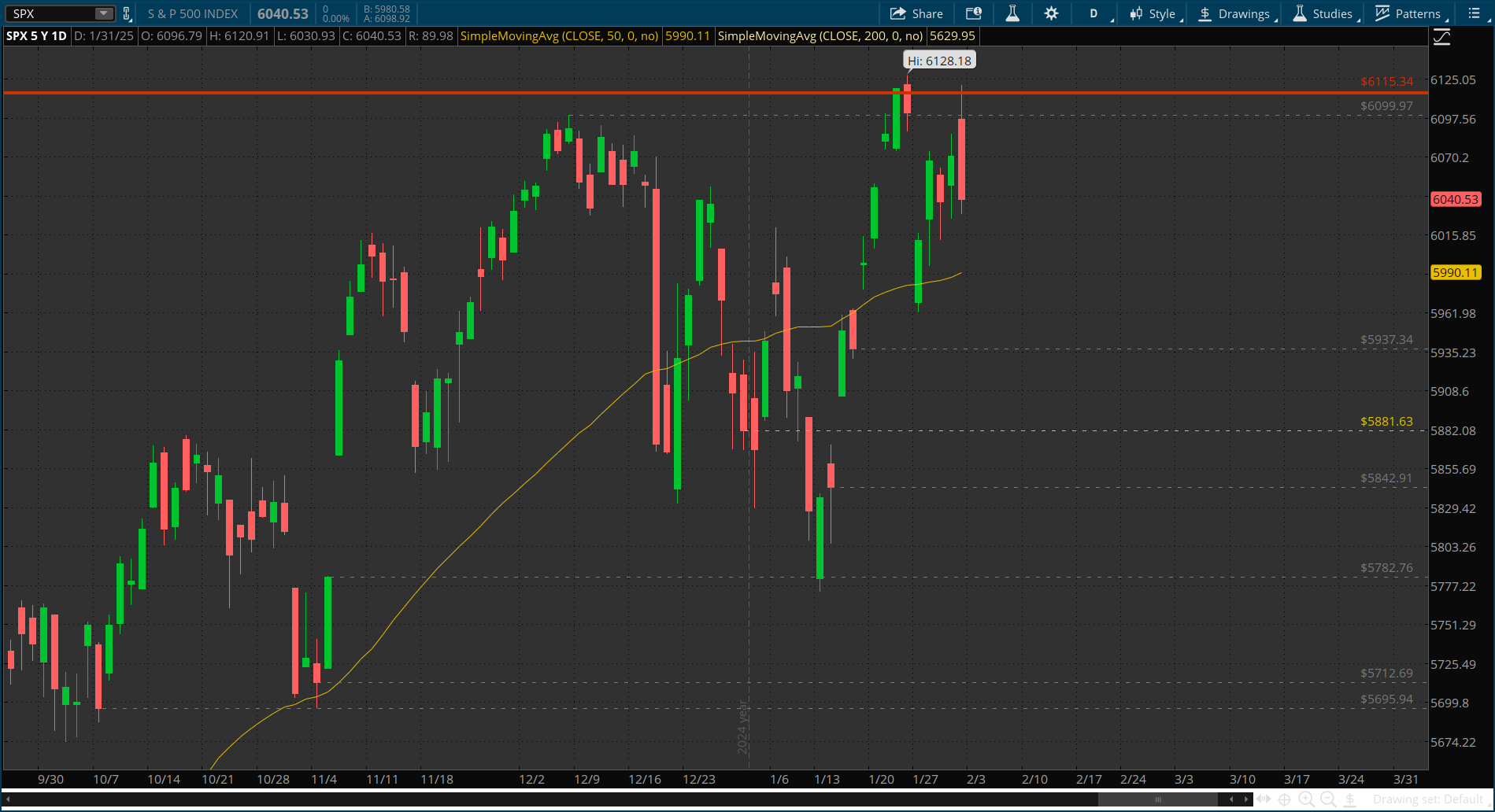
So far the measured move resistance has held twice now (dark red line). We hit it last Friday and fell on Monday’s news of a Chinese low-cost AI alternative. We rallied back to 6115 on Friday, only to roll over on the new tariff news.
The key pivot points going forward will be the 6115 level above and the January lows around 5780 below (which was the post-election day gap up). Even though we have encouraging data that shows the potential for another good year in markets, don’t be surprised to see some weakness along the way.
